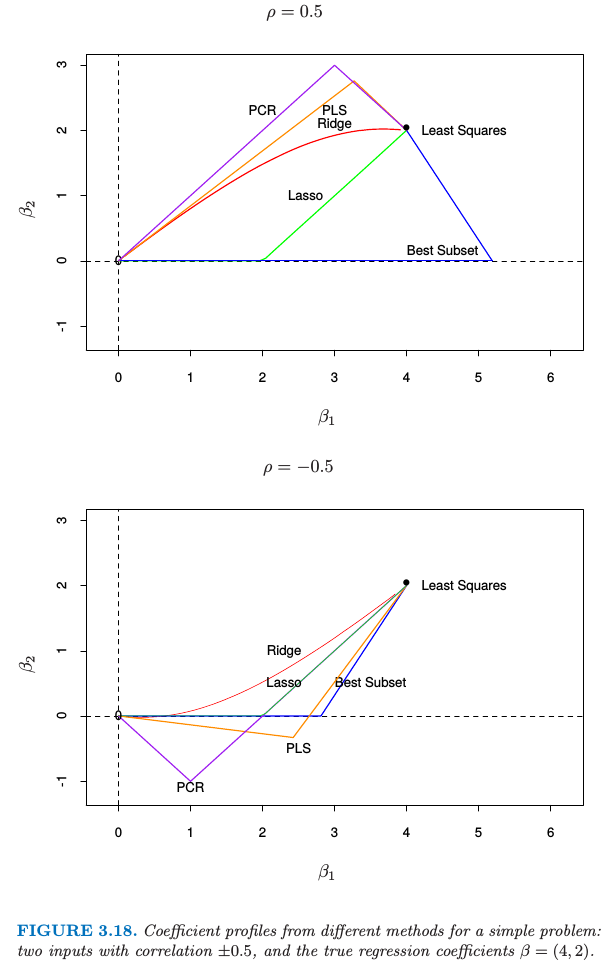Consider an example with two correlated inputs and , with correlation . We assume that the true regression coefficients are and . Figure 3.18 shows the coefficient profiles for the different methods, as their tuning parameters are varied. The top panel has , the bottom panel . The tuning parameters for ridge and lasso vary over a continuous range, while best subset, PLS and PCR take just two discrete steps to the least squares solution. In the top panel, starting at the origin, ridge regression shrinks the coefficients together until it finally converges to least squares. PLS and PCR show similar behavior to ridge, although are discrete and more extreme. Best subset overshoots the solution and then backtracks. The behavior of the lasso is intermediate to the other methods. When the correlation is negative (lower panel), again PLS and PCR roughly track the ridge path, while all of the methods are more similar to one another.

It is interesting to compare the shrinkage behavior of these different methods. Recall that ridge regression shrinks all directions, but shrinks low-variance directions more. Principal components regression leaves high-variance directions alone, and discards the rest. Interestingly, it can be shown that partial least squares also tends to shrink the low-variance directions, but can actually inflate some of the higher variance directions. This can make PLS a little unstable, and cause it to have slightly higher prediction error compared to ridge regression. A full study is given in Frank and Friedman (1993). These authors conclude that for minimizing prediction error, ridge regression is generally preferable to variable subset selection, principal components regression and partial least squares. However the improvement over the latter two methods was only slight.
To summarize, PLS, PCR and ridge regression tend to behave similarly. Ridge regression may be preferred because it shrinks smoothly, rather than in discrete steps. Lasso falls somewhere between ridge regression and best subset regression, and enjoys some of the properties of each.